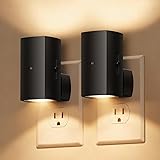Have you ever wondered if it’s truly possible to generate electricity for free, right from your home, as shown in the video above? The concept of a homemade light bulb generator captivates many, suggesting a world where energy costs could be a thing of the past. Crafting a device that powers a light bulb using common household tools is an intriguing challenge for any DIY enthusiast or budding inventor.
While the allure of “free energy” often sparks curiosity, understanding the underlying scientific principles of electricity generation is crucial. This exploration delves into how you can construct a basic generator, illuminating the real science behind turning kinetic energy into electrical power.
Understanding DIY Electricity Generation Principles
The core principle behind any generator, whether a massive power plant or a small homemade device, is electromagnetic induction. This scientific phenomenon explains how a changing magnetic field can induce an electric current in a conductor. Faraday’s Law of Induction is the fundamental concept at play.
Conversely, perpetual motion machines, which some associate with “free energy,” are scientifically impossible. Energy cannot be created or destroyed, only converted from one form to another. Therefore, any device generating electricity must have an input energy source, even if that source seems readily available or inexpensive.
The Reality of “Free Energy” Devices
The term “free energy” often leads to misconceptions. In scientific terms, true free energy, meaning energy created from nothing, violates the laws of thermodynamics. However, many DIY projects aim to harness ambient or easily accessible forms of energy, which can feel “free” in a practical sense, such as kinetic energy from human motion or wind.
For instance, a simple homemade light bulb generator might convert the mechanical energy of a spinning hand crank into electrical energy. This process involves a series of energy transformations, not the creation of energy itself. Consequently, understanding these conversions is key to successful DIY projects.
Essential Components for Your Homemade Light Bulb Generator
Building a functional generator at home doesn’t require highly specialized equipment. Instead, it relies on combining readily available materials in an ingenious way. The primary goal is to create a setup where a magnet moves relative to a coil of wire, or vice-versa.
Despite the simplicity, each component plays a vital role in the overall efficiency and output. Understanding their function helps in troubleshooting and improving your design. Here are some key materials often used:
Magnets and Coils: The Heart of the Generator
-
Magnets: Permanent magnets are essential for creating the magnetic field. Stronger magnets, such as neodymium magnets, generally produce more effective magnetic fields, leading to greater induced current. The strength of the magnetic field directly impacts the generator’s output.
-
Copper Wire: This material acts as the conductor. A coil of copper wire provides a path for the induced current. The number of turns in the coil and its diameter influence the voltage generated; more turns typically mean higher voltage output.
However, simply having these components is not enough; their interaction is what truly matters. The relative motion between the magnet and the coil is what induces the electrical current. This interaction transforms mechanical energy into electrical energy, powering your light bulb.
Mechanical Systems and Output Conversion
-
Rotational Mechanism: This could be anything from a hand crank, a small motor repurposed as a generator, or even a wind turbine blade. The mechanism’s purpose is to create the necessary motion between the magnet and the coil. Efficiency here directly impacts the electrical output.
-
Light Bulb (Load): A low-wattage LED (Light Emitting Diode) is often preferred for homemade generators. LEDs require less power than traditional incandescent bulbs, making them easier to light with limited DIY generated electricity. The voltage and current requirements of the bulb must match the generator’s output for effective illumination.
-
Connecting Wires and Connectors: These are crucial for safely transmitting the generated electricity to the light bulb. Proper insulation and secure connections prevent short circuits and ensure a continuous flow of current.
On the other hand, attempting to power high-wattage appliances with a small DIY electricity generation project is often unrealistic. The power output from such a generator is typically very low, suitable only for small loads like an LED.
Safety First in DIY Power Projects
Working with electricity, even at low voltages, requires attention to safety. Incorrect wiring or exposed components can lead to electric shocks or short circuits. It is imperative to always prioritize safety when experimenting with DIY electrical projects.
Despite the excitement of building a device that generates power, caution must be exercised at every step. Ensuring all connections are secure and insulated is not merely good practice, but a critical safety measure. Always double-check your work before testing your generator.
Essential Safety Precautions for Home Generators
-
Insulation: Ensure all exposed wires and connections are properly insulated. Electrical tape or heat shrink tubing can provide necessary protection. Exposed conductors pose a shock hazard.
-
Low Voltage Focus: Beginners should start with low-voltage projects. The risks associated with high voltage are significantly greater, demanding professional expertise. This type of homemade light bulb generator typically produces very low voltages.
-
Supervision: Children and inexperienced individuals should always be supervised by an adult or someone knowledgeable in basic electronics. Accidents can happen quickly without proper guidance.
-
Testing Procedures: Use a multimeter to test voltage and current output before connecting a load. This prevents damage to your light bulb and helps verify the generator’s functionality safely. Never assume the output is correct without verification.
However, ignoring these precautions can turn a fun learning experience into a hazardous one. A safe approach guarantees a more enjoyable and educational journey into the world of DIY electricity.
Beyond the Bulb: Applications of Small-Scale Generators
While lighting a single bulb is a fantastic starting point, the principles learned from building a homemade light bulb generator can extend to other small-scale applications. These projects often focus on portable power or educational demonstrations rather than replacing grid electricity.
Conversely, many assume these small generators can power entire homes, which is far from the truth. Their true value lies in demonstrating fundamental physics and providing small amounts of power in specific situations.
Practical Uses for DIY Power Solutions
-
Educational Demonstrations: These generators are excellent tools for teaching basic physics concepts like electromagnetic induction and energy conversion. They provide a tangible example of abstract scientific principles, making learning more engaging.
-
Emergency Lighting: A hand-cranked generator, for example, could provide temporary light during a power outage. While not a primary power source, it offers a reliable backup for critical situations. Even a small amount of light can be incredibly helpful.
-
Charging Small Devices: With additional circuitry (like a voltage regulator and rectifier), a small generator could potentially charge low-power devices like a smartphone or a small battery pack. This requires careful consideration of voltage and current regulation.
-
Hobbyist Projects: For those interested in sustainable energy or off-grid living, building a small generator is a valuable step. It allows experimentation with various designs and components, fostering innovation and practical skills.
The journey of building a homemade light bulb generator is more about the learning experience and understanding scientific principles than achieving significant energy independence. It showcases the exciting potential of converting readily available energy into useful electricity.










